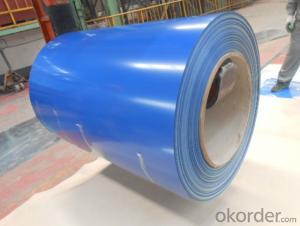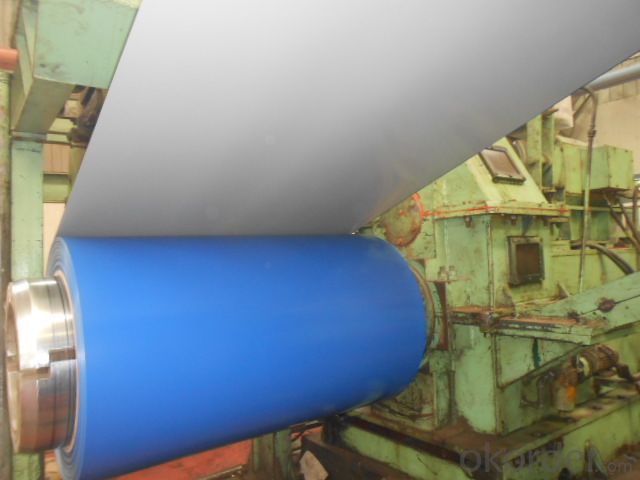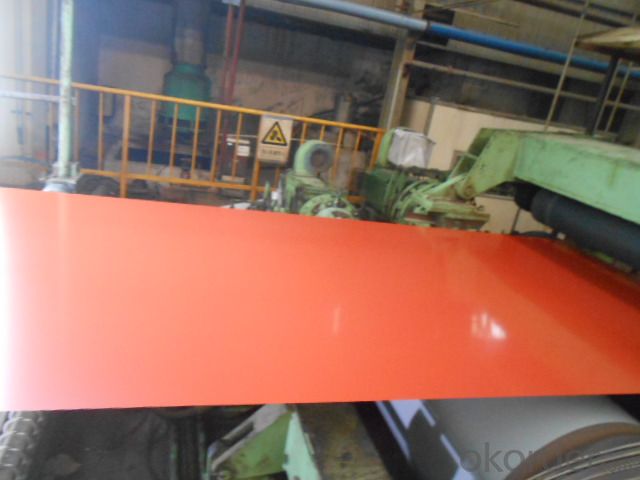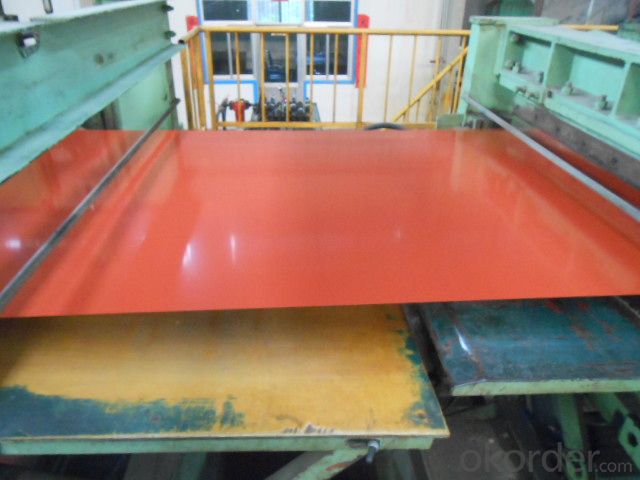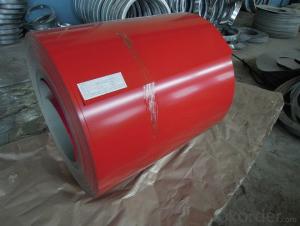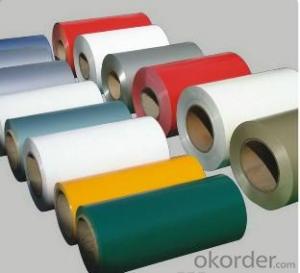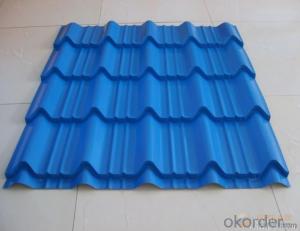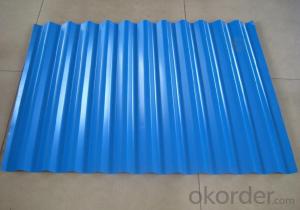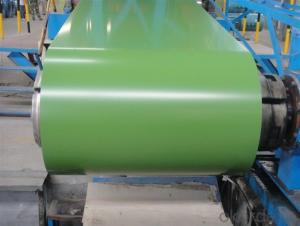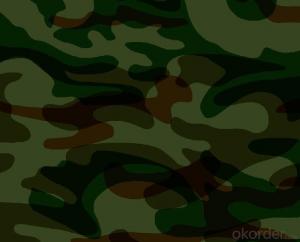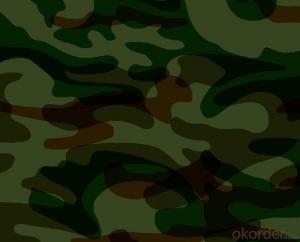Pre-Painted Galvanized/Aluzinc Steel Coil DX52D China
- Loading Port:
- China main port
- Payment Terms:
- TT OR LC
- Min Order Qty:
- 50 m.t.
- Supply Capability:
- 10000 m.t./month
OKorder Service Pledge
OKorder Financial Service
You Might Also Like
1. Pre-Painted Galvanized/Aluzinc Steel Coil DX52D China
With GI as base material, after pretreatment (degrease and chemical treatment ) and liquid dope with several layers of color, then after firing and cooling, finally the plate steel is called pre-painted galvanized (aluzinc) steel. Pre-painted galvanized steel is good capable of decoration, molding, corrosion resistance. It generally displays superior workability, durability and weather resistance.
2.Main Features of Pre-Painted Galvanized/Aluzinc Steel Coil DX52D :
• Excellent process capability
• Smooth and flat surface
• Workability, durability
• Excellent heat resistance performance
3.The Steel Coil Images:
:
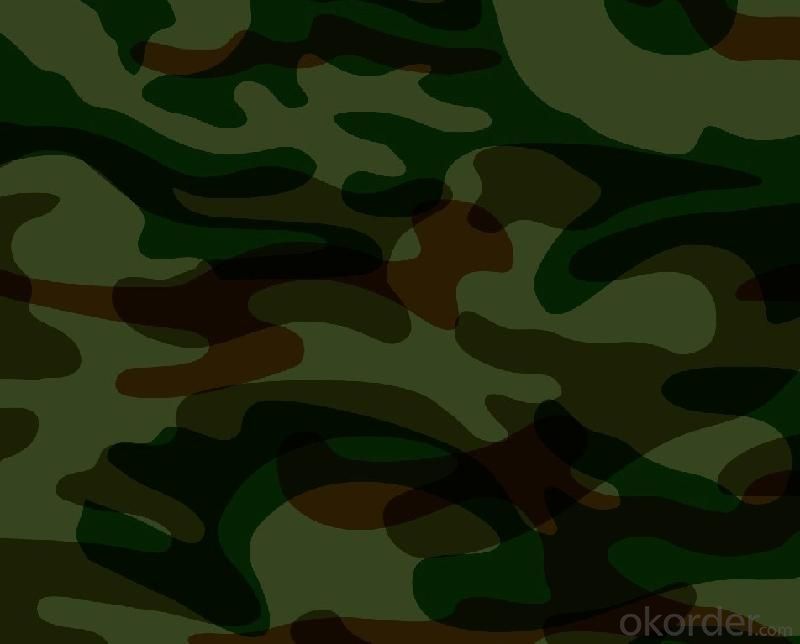
4.Pre-Painted Galvanized/Aluzinc Steel Coil Specification
Standard: AISI, ASTM, BS, DIN, GB, JIS
Grade: DX51D, DX52D
Thickness: 0.17-2.0mm
Brand Name: KMRLON
Model Number: coil
Type: Steel Coil
Technique: Cold Rolled
Surface Treatment: Coated
Application: Boiler Plate
Special Use: High-strength Steel Plate
Width: 20-1250mm
Length: customized
commoidty: pre-painted galvanized steel coil
Thickness: 0.13-4.0mm
width: 20-1250mm
zinc coating: 40-180g/m2
printing thickness: top side: 20+/-5 microns, back side: 5-7 microns
color: all RAL color
coil weight: 4-7 tons
coil ID: 508/610mm
5.FAQ of Pre-Painted Galvanized/Aluzinc Steel Coil
1. How to guarantee the quality of the products?
We have established the international advanced quality management system,every link from raw material to final product we have strict quality test;We resolutely put an end to unqualified products flowing into the market. At the same time, we will provide necessary follow-up service assurance.
2. How long can we receive the product after purchase?
Usually within thirty working days after receiving buyer’s advance payment or LC. We will arrange the factory manufacturing as soon as possible. The cargo readiness usually takes 15-25 days, but the shipment will depend on the vessel situation.
- Q: How can I judge the quality of steel?
- Various ways: Carry out mechanical testing on it to see how strong it is. eg. Tensile testing, hardness testing, impact testing. Examine a cleaned up sample on the steel under a microscope to see what the steel grain structure is like and what condition it is in (hardened etc.) Or the easiest way is to ask the supplier what it is and then find a specification sheet giving you all the above information.
- Q: Where do I need hot galvanized steel coils and color coated rolls?
- Hot galvanized steel coils and color coated rolls have light, beautiful and good corrosion resistance, and can be directly machinedThe construction industry, shipbuilding, vehicle manufacturing, furniture and electrical industries provide a new type of raw materialThe utility model has the advantages of steel replacing wood, efficient construction, energy saving, pollution prevention and the like.
- Q: What is the standard length of steel coils?
- The standard length of steel coils can vary depending on the specific industry and application. However, a common standard length for steel coils is typically around 30 feet or 9.1 meters.
- Q: How are steel coils used in the production of automotive stampings?
- Steel coils are used in the production of automotive stampings as they provide a continuous and uniform supply of raw material. These coils are fed into stamping machines where they are cut, shaped, and formed into various automotive components such as body panels, chassis parts, and structural reinforcements. The use of steel coils ensures efficient and consistent production, resulting in high-quality automotive stampings that meet industry standards for strength, durability, and precision.
- Q: Does the solution change, or does only the steel wool change color?
- once you upload water to anhydrous copper(II) sulphate it turns blue because of the fact that's going to become hydrous copper(II) sulphate. Then, in case you upload water greater, that's going to proceed to be blue, could be slightly darker.
- Q: How much should someone sell a 6 ft stainless steel counter? How about one with a sink?
- Sheet stainless steel is about $2.00 to $2.75 per lb. in the US right now for a 2B stainless steel without any special finish. The cost of a sink or counter is going to vary widely. The labor to fabricate it is going to be a lot higher than the material cost so the price per pound is not going to tell you much. In California a custom 6' counter would be somewhere between $1,200 and $3,000. A standard size single compartment sink would be about half of that.
- Q: Heard some steel companies like TATA Steel and JSW are in good performance. can some one suggest me if its good time to invest in steel industry ?
- I feel metal stocks can give some return now if you invest.
- Q: I beat fallout 3 and i downloaded broken steel expansion. I have no idea how to get to broken steel in other words i do not know how to start playing it.
- Sorry, all three above are wrong. Once Broken Steel is downloaded via windows live it's supposed to start automatically, but if it's not then one should launch Fallout 3 from the Fallout3Launcher.exe and in the Data Files section checkmark Broken Steel before hitting Play Game. Then, if you've done everything right, no matter if you're first level stuck in Vault 101 or 20th level playing for 69 hours, in about a minute or so a message will appear saying that Broken Steel is installed and that your level cap has been raised from 20 to 30. Even if you don't proceed through the main quest to the new Broken Steel quests, Broken Steel content will still appear in your game, from Supermutant Overlords with Tri-Laser Rifles to Albino Radscorpions, they're all out there in random encounters. Broken Steel is how the game should've been released from the beginning if Bethesda had any conscience, but now that we've got it, enjoy it.
- Q: What are the common coil slitting equipment used in the industry?
- The common coil slitting equipment used in the industry include slitting lines, slitter knives, and tension stands. Slitting lines are machines used to cut a large coil into smaller coils of desired widths. Slitter knives are sharp blades mounted on the slitting line that perform the cutting process. Tension stands are used to control the tension of the coils during the slitting process, ensuring smooth and accurate cuts.
- Q: which cost more: ALLOY, GUNMENTAL OR STAINLESS STEEL. GIVE ME AN IDEA OF THE COST OF EACH.
- Alloy okorder /
Send your message to us
Pre-Painted Galvanized/Aluzinc Steel Coil DX52D China
- Loading Port:
- China main port
- Payment Terms:
- TT OR LC
- Min Order Qty:
- 50 m.t.
- Supply Capability:
- 10000 m.t./month
OKorder Service Pledge
OKorder Financial Service
Similar products
Hot products
Hot Searches
Related keywords
